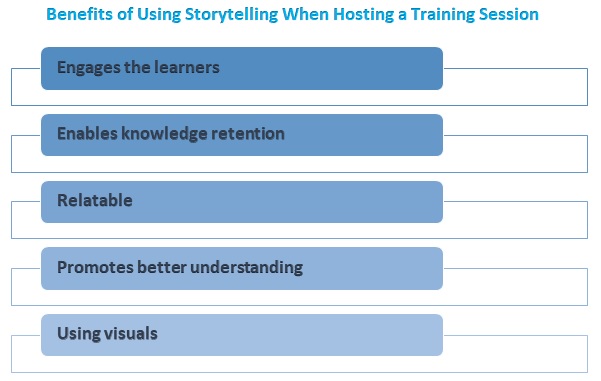
Storytelling is a training and teaching tool that has been used for several years, but has been gaining more traction recently. As the name suggests, it refers to the act of imparting knowledge or teaching a particular topic within the frames of a story. Typically, stories are a good way to grab the learners’ attention, and thus, a corporate trainer training course tends to emphasise the essence of integrating storytelling in the training and development process. In this blog, we will be exploring some of the main benefits of using storytelling when hosting a training session.

Storytelling has been commonly used for teaching young learners as it appears to be a useful way to engage the learners. In fact, storytelling is also often used an activity, wherein the learners have to compose their own stories. This paves the way for creative thinking, and builds upon one’s communication skills. Nevertheless, the extent to which storytelling can be used in corporate training tends to be different because corporate training generally focusses on the transfer of a fixed set of knowledge, skills, and abilities that is relevant to the company’s objectives, and helps maximise profits. That said, corporate trainers must still use storytelling, but ensure that it conforms with the training topic, the learners’ characteristics, the learning goals, and finally, the company’s objectives.
Written By : Shivangi Chakraborty
Centre For Training & Professional Development (CTPD) - The Trading brand of TTA Training Private Limited, India is a ISO 9001:2015 Company




© 2021 - Centre For Training & Professional Development (CTPD). All Rights Reserved. Centre For Training & Professional Development (CTPD) trading brand of TTA Training Pvt. Ltd (India) - CIN U80902WB2016PTC215839, Asia Teachers Training Co., Ltd (Thailand) - Registration No. 0105558193360 & Asian College Of Teachers Ltd (UK) - Company Number 9939942 & Asian College Of Teachers LLC, (USA) - Federal Tax Identification Number 30-1261596
Designed by kreativewebtech